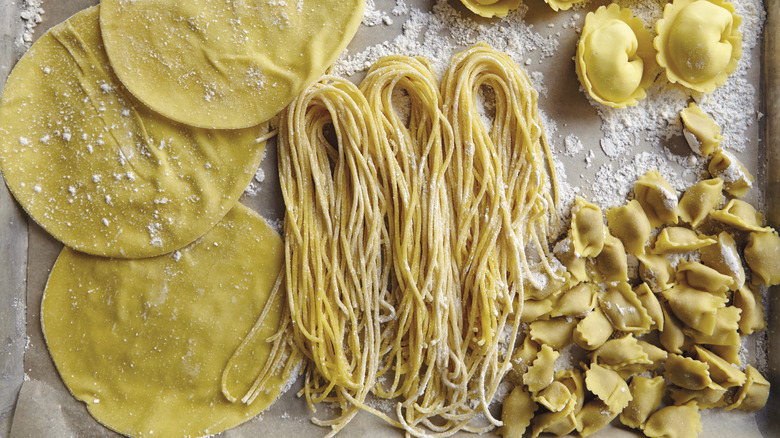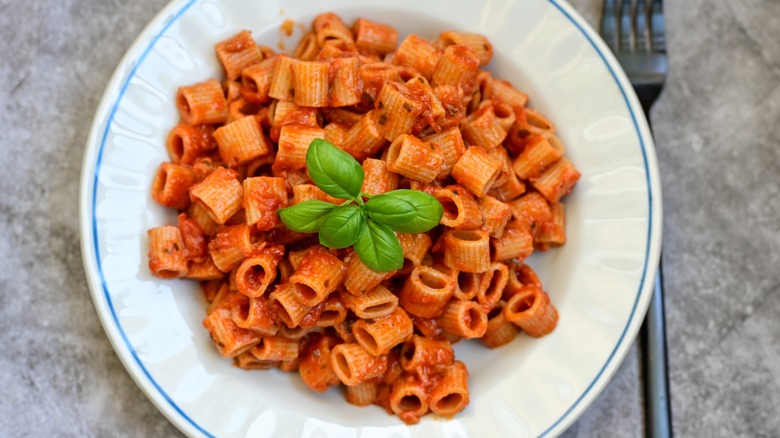The Best Flour Combination For Homemade Gluten-Free Pasta
Nailing homemade gluten-free pasta is notoriously challenging. The dough can be super sticky and difficult to work with, and even if you manage to get it together, the final product can fall apart when it hits boiling water, turn into a mushy mess, feel gritty on the palate, or have an unpleasantly gummy texture. That's why Food Republic sought advice from Chef Jasper J. Mirabile Jr., the owner of Jasper's Restaurant in Kansas City, Missouri.
It all starts with the flour. When it comes to the ideal ratio, Chef Mirabile said, "I recommend a 50/50 combination of rice flour and corn flour." Corn flour is made from very finely ground dried whole corn kernels. It's similar to cornmeal, but has a powdery texture. It's also important to note that corn flour is not the same as "cornflour," a term used in the United Kingdom for cornstarch — the fine white powder made solely from corn's starchy endosperm.
For that extra chewiness expected from wheat-based pastas, consider adding a bit of xanthan gum, the secret ingredient used for pillowy gluten-free cakes. Made from a byproduct of fermented sugar, xanthan gum acts as a thickener and stabilizer. Psyllium husk is another ingredient that can be used instead of, or alongside, xanthan gum. It works similarly, but comes from the fibrous outer layer of Plantago ovata plant seeds.
More tips for making gluten-free pasta
While the combination of rice and corn flours makes it easier to pull off gluten-free pasta, you still need to use the right techniques. Proper hydration is an important aspect to consider. "Just remember, gluten-free pasta requires a little bit more moisture," Chef Jasper J. Mirabile Jr. explained to Food Republic. "So adding a little more egg and water is always a good suggestion."
Additionally, allowing the dough to rest is another important step. This helps the flour hydrate, creating a dough with a more homogenous texture that can be easily rolled. Chef Mirabile recommended a resting period of about 30 minutes. After cutting your pasta into shapes, it's also a good idea to let it sit out for another 10 minutes or so. This allows the noodles to dry out a bit, preventing them from clumping together as they cook.
The final step — boiling the pasta — will show if all your efforts were worth it, so be very careful here! "Don't forget, gluten-free pasta [cooks] much quicker," Chef Mirabile cautioned, "so keep your eye on it." It should only take about three to four minutes to cook through. Taste it to ensure it's perfectly al dente before tossing it with a celebrity chef-approved store-bought pasta sauce or a simple pesto.


